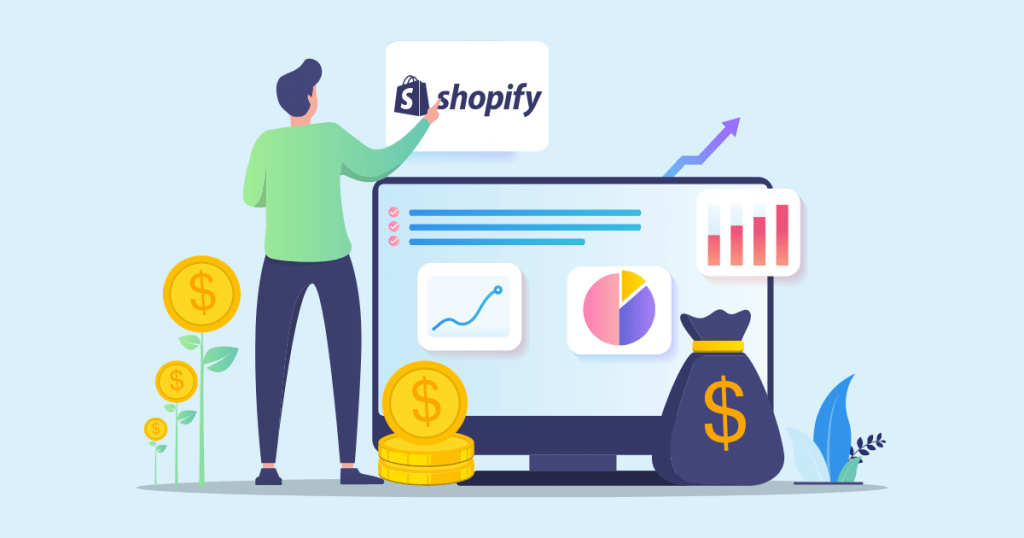
Shopify Secrets: 6 Things You Need to Know About Shopify

Who isn’t familiar with Shopify? The world’s most renowned eCommerce platform. The majority of the businesses prefer Shopify as their first choice for eCommerce development. As a result, Shopify generated around $3 billion in 2020. But, despite it being wildly popular, there are some secrets you don’t know about Shopify.
That’s true. The eCommerce industry holds many secrets that nobody is aware of, and Shopify is no exception. So let’s take a peek into the secrets of Shopify.
Inflexible transaction fees
The foremost thing every entrepreneur worries about is the development cost. In the beginning, everybody aims to get the higher sales and best profitability paralleled to their investments. However, Shopify charges extremely high transaction fees for each purchase.
Shopify has 4 versions, Basic Shopify, Shopify, Advanced Shopify, and Shopify Plus.
Basic Shopify charges $29 monthly. Also, their online processing fee is 2.9% on every 30 cent purchase. The in-person credit card processing rate is 2.7% per purchase. And if any customer uses other payment providers other than Native Payment methods, Shopify charges 2% per transaction.
Shopify charges $79 monthly. In addition to that, their online processing fee is 2.6% on every 30 cents spent. The credit card processing fee is 2.5%, and the third-party payment provider fee is 1% per transaction.
Meanwhile, Advanced Shopify costs $299 per month with an online processing fee of 2.6% on every 30 cents. Along with that, they charge 2.6% for credit card processing fees and 0.5% for a third-party payment provider.
Lastly, Shopify Plus is sales based Shopify version. Starting from $2000 per month, it can reach up to $40,000 per month as per the store requirements. It charges 1.6% on every 35 cents purchase. Its credit card processing fee is 2.4%, and third-party provider fee is 0.15% per transaction.
It may seem reasonable at first, but when bulk order comes, you end up paying an excessive amount of transaction fees that can impact your profit heavily. However, when you use other eCommerce platforms, such as Magento, you can save a lot of transaction costs as they are cheaper than Shopify.
Complicated SEO functionality
Although Shopify is a highly functioned eCommerce platform, it has very few in-built SEO functions, such as Canonical URLs, Sitemaps, Robots.txt, Titles and Meta descriptions, and Alt tags for images.
Shopify requires you to pay for additional functionality and external tools from other companies and third-party extensions. When you create your eCommerce store with Magento or other platforms, you will get access to numerous robust SEO tools. In addition, they are cheaper compared to the other sites. You can get numerous free and open-source tools that are compatible with every platform.
Complex Data Migration
Businesses have tons of data they need to take care of. If anything gets misplaced, it increases tons of work for the business owners. Data migration in Shopify is very complicated. Data migration in Shopify is not open-source, meaning you cannot transfer your data among the eCommerce platforms.
Shopify is cloud-based, therefore it is hard to migrate your data on a different eCommerce platform. Therefore, if you decide to change your eCommerce platform in the future, you need to build your entire website from scratch. And it becomes very difficult when you have established your entire store as you need to manually upload and implement tons of data onto the next platform.
Cannot Manage Multiple Store from a Single Dashboard
The biggest drawback of Shopify is that it does not allow users to manage multiple stores from a single dashboard. It is a bit unbelievable as the biggest eCommerce platform does not allow the management of multiple stores from a single dashboard.
With Shopify, you only get one store per username. If you have multiple stores on Shopify, you need a separate login for each one. Or you can get a third-party app that can help you integrate multiple stores onto the first page. If you hire Magento developers for your eCommerce development, they’ll help you manage the multiple stores that you can operate on a single platform. Magento has inbuilt multi-store management, making the eCommerce experience easier for users.
Poor Content Management
Shopify does not offer advanced features, such as hosted informative videos, photo carousel, and background GIFs. In addition, Shopify offers poor content management and has very limited features to add and manage your website content.
It does not allow customization. You have to implement the same design as the rest. After some time, the same design gets boring, and it may have a negative impact on your customers. Additionally, Shopify has poor CMS, thus you need to work very hard to implement your content marketing strategies and promote your products.
Limited Customization
As we mentioned earlier, “Shopify believes in one design for all.” Thus, it does not give more space for customization. However, an eCommerce website requires regular modifications to keep the customers engaged. Therefore, even if your website is simple, regular updates and customization can make your customers interested in your brand and differentiate you from your rivals.
Alas, Shopify does not have that privilege. Shopify offers easy setup and easy modification in the beginning. However, as time goes by, you need to expand your eCommerce store. Shopify only allows you to do basic modifications, making it difficult to implement advanced changes, such as adding B2B products, applying multiple themes, etc.
In conclusion, as a beginner, it is advisable to go for Magento if you want to expand your business in the future. If you have modification skills or a budget to Hire Magento Developer you can choose Magento and make your business stand out in the market.
Final Word:
If you are completely from a non-technical background, you can choose Shopify as your first eCommerce platform. However, you need to keep these things in your mind before you make your final decision. Go through these secrets, plan your strategies, and start your eCommerce business accordingly for guaranteed success.